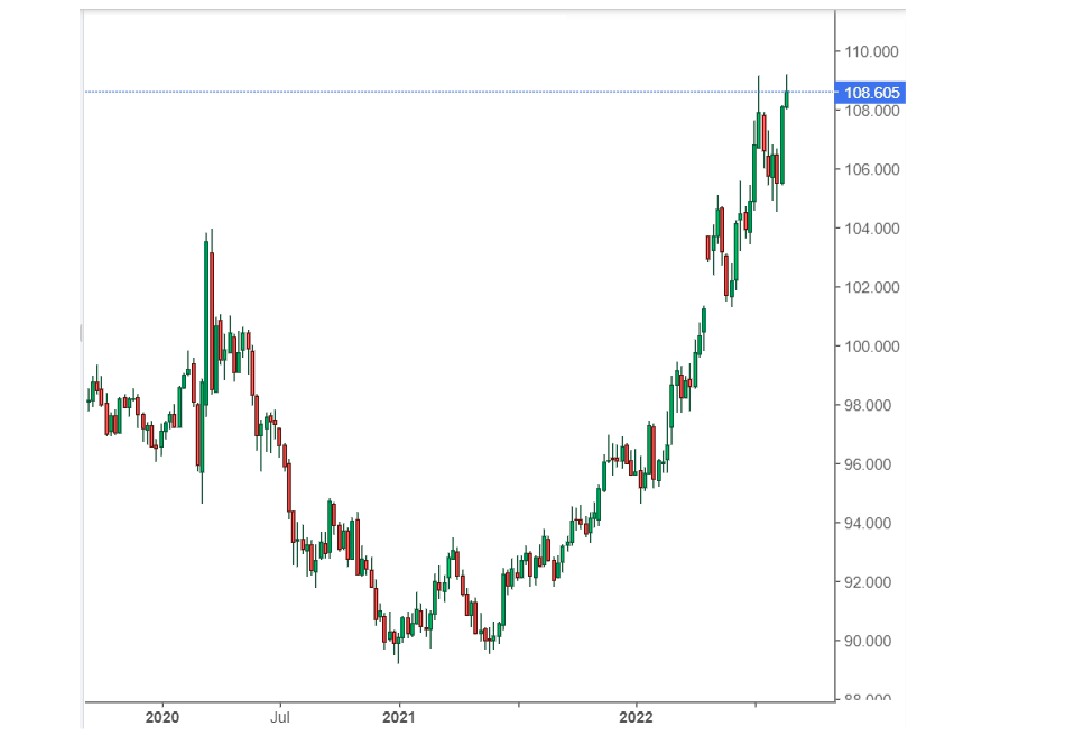By Renisha Chainani, Head – Research, Augmont Gold For All
Bullion prices have underperformed in 2022 because the trend in dollar has remained bullish as there is an inherent weakness in other developed economies compared to the US. With the Eurozone energy crisis, the UK into a recession with low growth high inflation, China struggling with property crisis and issues over Taiwan, etc. rival currencies are restrained from surging and the price action is mainly determined by the movement in the USD.
The U.S. Dollar Index, is currently trading above the 109 level. The U.S. dollar started the year around 95 levels with strong rally of more than 15% in last eight months as traders rushed to the safety of the American currency. The global market sell-off highlighted recession worries, has provided additional support to the U.S. dollar.
Dollar Index Weekly Chart

EUR/USD declined below Dollar parity as European natural gas prices have more than doubled in 2022. The current sell-off is a major event for EUR/USD traders as the European currency has not been that weak against U.S. dollar since 2002. Whereas, GBP/USD has declined to yearly lows, although it should be noted that it traded even lower during the coronavirus-related sell-off in March 2020. Worries about the health of the UK economy continue to put pressure on the British pound, and it remains to be seen whether it will be able to break the current downside trend in the upcoming trading sessions.
US seems to be in better shape than other countries, though there is negative growth registered in first two quarters of 2022. Moreover, a cumulative 225 basis points of hikes since March and with more to come have brought a recession close. Having said that, US FED is likely to increase the quantitative tightening (QT) from September, though it is moving slowly and well behind schedule. According to Fed’s proposed schedule, there would be up to $47.5 billion monthly reductions in its balance sheet between June and August. Since the start of June, there has only been a total reduction of $31.2 billion in two months with a $111.3 billion reduction yet to happen for August before the September scheduled increase, which is likely to double at a $95 billion per month.
Higher Interest rates has weighed on non-interest-bearing bullion. Investor demand has faltered, with holdings in exchange-traded funds dropping from last 10 weeks. For a time being, till Dollar Index is strong and US FED is hinting Interest rate rise, Gold will continue to lose its safe-haven appeal. But very soon, when the dice rolls and FED hints for pivot or turns dovish due to growth concerns, we will see safe-haven status returning in Gold.
